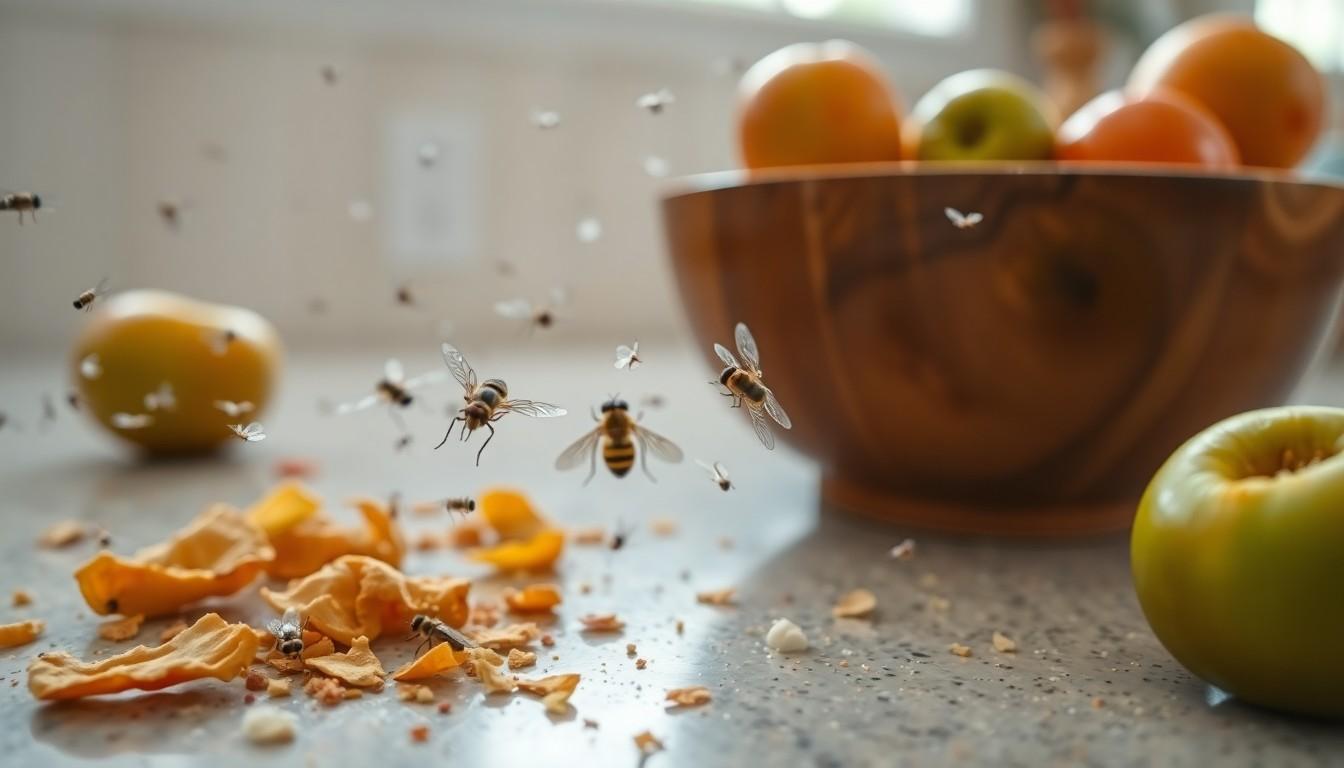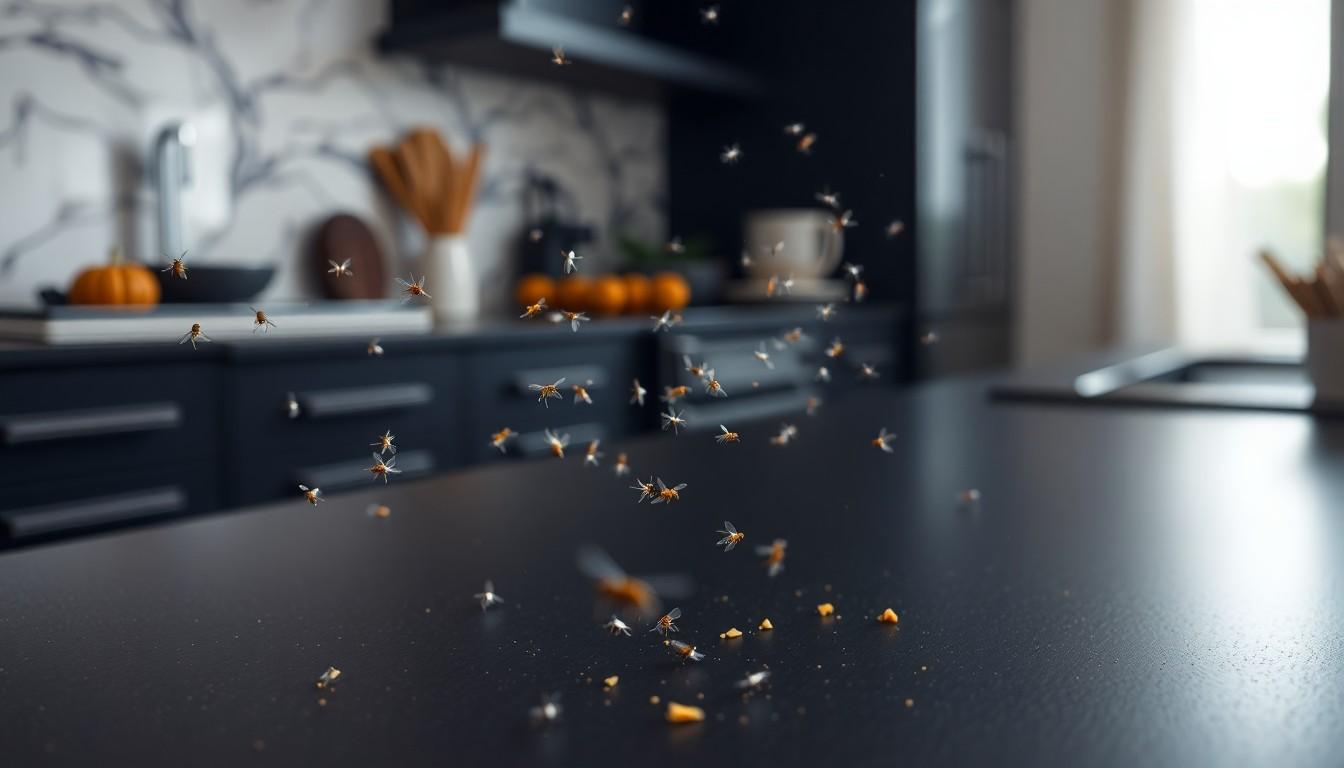Tiny white flies buzzing around the house can be a real nuisance, especially when there are no plants in sight to blame for their presence. These little pests seem to have an uncanny ability to appear out of nowhere, turning a peaceful home into a scene from a horror movie. They might be small, but their impact can feel anything but insignificant.
Overview of Tiny White Flies
Tiny white flies can invade homes even without plants nearby. Their presence creates an unsettling atmosphere and disrupts peaceful living conditions.
Description and Identification
These pests typically appear as small white dots in the air. Adults measure about 1/16th of an inch and possess delicate, white wings. They often gather in groups, making them noticeable against darker surfaces. Adult flies can be mistaken for other small insects, so careful observation is necessary. Check for traits like their rapid movements and drifting flight patterns. Residents might also notice their larvae, which are tiny and translucent, often found in dust or debris.
Common Species Found Indoors
Several species can invade indoor environments. Whiteflies, such as Trialeurodes vaporariorum, are often found in houses. A common household nuisance, the fungus gnat, also features a small, fly-like appearance. Another potential intruder is the moth fly, known for its fuzzy look and love of damp areas. Some species emerge when conditions become overly humid or there’s excessive moisture in the air. Each species contributes to a unique disturbance, adding to the overall annoyance of tiny white flies indoors.
Causes of Infestation

Tiny white flies can invade homes even without plants. Several factors contribute to their presence indoors.
Attractants in the Home
Food sources often draw tiny white flies. Crumbs, spills, and open food containers create ideal conditions for these pests. Similar to other insects, they seek sugar and decaying organic matter. Trash cans without lids can also become breeding grounds. Unsealed products, such as fruit or vegetables, contribute to their attraction. Moist areas, like sinks or countertops, may harbor stagnant water, encouraging their presence.
Environmental Factors
Humidity plays a significant role in attracting tiny white flies. High humidity levels create a favorable environment for reproduction. Warm temperatures also contribute to their lifecycle, allowing quicker breeding. Poor ventilation can exacerbate these conditions, especially in enclosed spaces. A lack of cleaning encourages infestations by providing breeding habitats. Regular maintenance, including removing debris and cleaning surfaces, minimizes environmental factors that invite tiny white flies.
Impact on Health and Home
Tiny white flies can pose health risks and contribute to property damage. Their presence in a home creates discomfort, particularly for individuals sensitive to allergens or irritants.
Allergies and Irritation
Allergens can be a significant issue. Tiny white flies may trigger allergy symptoms such as sneezing, itching, and respiratory problems. Irritation from these pests can stem from their presence in living spaces. Airborne particles, including waste and shed skin, contribute to an unpleasant indoor environment. Individuals with asthma or other respiratory conditions face increased health risks due to exposure to these insects. Maintaining cleanliness helps mitigate these effects, as reducing waste and allergens can create a healthier living space.
Damage to Property
Property damage can occur when tiny white flies invade homes. They may contaminate food items, leading to waste and the potential for foodborne illnesses. Infestations often damage household surfaces as they leave behind excrement, which can stain and diminish the aesthetic value of walls and furniture. The presence of these pests can make spaces feel unclean, potentially affecting resale value. Regular cleaning and prompt removal of these insects can minimize damage, preserving both hygiene and property integrity.
Control and Prevention Methods
Various methods exist for controlling tiny white flies in homes without plants. Both natural remedies and chemical solutions can effectively manage these pests.
Natural Remedies
Diatomaceous earth provides a natural insect barrier, effectively dehydrating tiny white flies upon contact. Using vinegar traps attracts and captures the pests with a mix of vinegar, dish soap, and water. Essential oils like peppermint, eucalyptus, and rosemary deter flies due to their strong scents, creating a less inviting environment. Homemade sprays combining water with dish soap can suffocate insects, offering a safe, eco-friendly alternative. Additionally, maintaining indoor humidity at lower levels prevents the reproduction of these flies, as they prefer damp conditions.
Chemical Solutions
Insecticidal soaps offer a specialized approach, targeting soft-bodied insects while minimizing harm to other organisms. Pyrethrin-based sprays, derived from chrysanthemum flowers, provide quick knockdown of the flies. Applying residual insecticides around doorways and windows serves as a barrier, effectively reducing re-entry. Additionally, following label instructions ensures safe use for both residents and pets. Regular monitoring of affected areas permits timely treatment, preventing population spikes and further disruption.
Conclusion
Tiny white flies can be a frustrating presence in homes devoid of plants. Their ability to thrive in various indoor conditions makes them a persistent nuisance. By understanding their attractants and implementing effective control measures, homeowners can significantly reduce the likelihood of infestations. Regular cleaning and maintenance play a crucial role in creating an inhospitable environment for these pests. Utilizing natural remedies and monitoring humidity levels can also contribute to a more comfortable living space. With diligence and the right strategies, it’s possible to reclaim a home from these unwelcome intruders.

